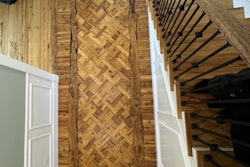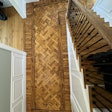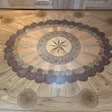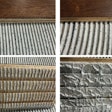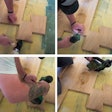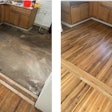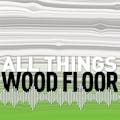Wood vents and registers are growing in popularity as an elegant finishing solution for ventilation ductwork in new and retrofit floor installations. Luckily for the installer, registers and vents can easily be installed simultaneously with wood, laminate and other flooring choices, and they are available in a multitude of species and stains to match just about any wood floor. Picking out the right register involves more than just finding the color that matches the floor, however. Before installing a wood register, you must choose the proper model for your particular application.
Choosing the Correct Wood Register
Selecting the correct register first involves understanding that the vanes on wood registers, by nature of their thicker material, block more air than do common metal registers. This makes them automatically less efficient, but proper planning and sizing can overcome this technicality to allow contractors to offer the good looks of wood demanded by discriminating customers.
If the open area on the register face is used as a measurement, the efficiency factor actually drops by more than half from metal registers to standard, horizontal-slotted wood registers of equal size. For example, a standard 2 1/4 -by-10-inch register has a face area of roughly 22 square inches. Of that, open area equals only about 5 inches: 3 3/8 inches (length) multiplied by 1/4 inches (width) multiplied by six slots, which is about half what a metal register allows. Comparing 4-by-10-inch registers, a metal unit offers 26 inches of open space, while a standard wood unit offers 11 1/4 inches. Vertical slots provide a bit more open area, as do egg-crate styles, so their efficiency factor is higher. Different models from different manufacturers may also offer improved air flow, so check the efficiency when you shop for a register.
Common Assumptions Debunked
Of course, it stands to reason that wood registers become more efficient the larger they get, since they have proportionally more open area. So, many installers think the solution to a wood register efficiency problem is simply to use larger registers. We often assume this is the cheap and easy way, but it's not enough. Why? Because of a thing called static pressure.
Static pressure is the friction caused by air being pushed through ductwork. This resistance factor varies with the diameter of duct pipe, the pipe's length and positioning of the pipe relative to the source of pressure, which is the blower. The horsepower of the blower's motor also affects the resistance. Simply placing a larger, more open register over a duct already suffering from a large static pressure factor won't do much to increase the air actually reaching past the register.
Some installers believe the solution to static pressure is a larger blower fan, but that often creates an unacceptably high noise level in a residential building.
Instead, when possible, wood flooring installers working on a new construction project should work with a skilled HVAC designer during the planning stages, before any ductwork has even been put in. Such a professional will take all these factors into account and will vary the size of the ductwork according to the volume of air necessary to move through the system, also considering the style of wood registers that will eventually be installed. The HVAC designer's air calculations will determine the proper size relation of the duct/pipe to the termination/register.
The next time your customer requests the upscale look and durability of wood registers, start considering your options in the planning stages to ensure the best possible configuration for functionality. The extra effort will pay off in increased customer comfort and long-term satisfaction.















